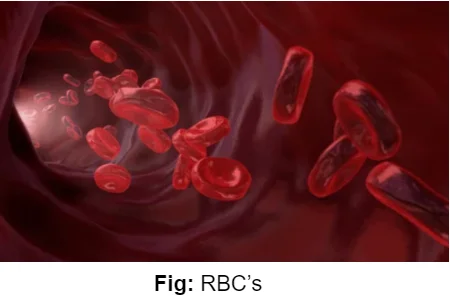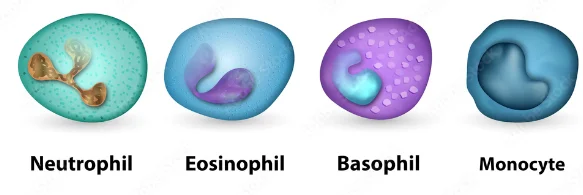Understanding the composition and functions of human blood is essential for grasping its vital role in the body. From plasma to formed elements, blood carries nutrients, oxygen, and waste products throughout the body, ensuring proper functioning.
A Comprehensive Overview of Components and Functions of Blood
1. Components of Blood
- Blood: Blood is a special connective tissue consisting of a fluid matrix, plasma, and formed elements.
- Plasma: It is a straw-coloured, viscous fluid constituting nearly 55 per cent of the blood.
- Plasma Composition: 90-92 per cent of plasma is water, and proteins (fibrinogen, globulins, albumins) contribute 6-8 per cent of it.
- It includes small amounts of minerals such as Na+, Ca++, Mg++, HCO3-, and Cl-.
- Fibrinogens: Essential for clotting or coagulation of blood.
- Globulins: Mainly engaged in defense mechanisms of the body.
- Albumins: Assist in maintaining osmotic balance.
- Other substances found in plasma include glucose, amino acids, lipids, etc.
- Factors required for blood coagulation are present in plasma, initially in an inactive form.
- Serum: Plasma lacking clotting factors is referred to as serum.

- Formed Elements: Erythrocytes, leucocytes and platelets are collectively called formed elements and constitute nearly 45 per cent of the blood.
- Erythrocytes: Also known as red blood cells (RBCs) are the most abundant of all the cells in blood.
- Formation: RBCs are formed in the red bone marrow in adults, are biconcave in shape and are devoid of nuclei in most mammals.
- Structure: They have a red-coloured, iron-containing complex protein called haemoglobin.
- A healthy individual has 12-16 gms of haemoglobin in every 100 ml of blood.
- These molecules play a significant role in the transport of respiratory gases.
- End of RBC’s: RBCs have an average life span of 120 days, after which they are destroyed in the spleen (graveyard of RBCs).
- Leucocytes: Also known as white blood cells (WBC) are colourless due to the lack of haemoglobin.
- These are nucleated, short-lived and relatively lesser in number.

-
-
- There are two main categories of WBCs – granulocytes (neutrophils, eosinophils and basophils) and agranulocytes (lymphocytes and monocytes).
- Neutrophils: These are the most abundant cells (60-65 %) of the total WBCs.
- Basophils: These are the least (0.5-1 %) among them. Basophils secrete histamine, serotonin, heparin, etc., and are involved in inflammatory reactions.
- Neutrophils and monocytes (6-8 %) are phagocytic cells that destroy foreign organisms entering the body.
- Eosinophils (2-3 %) resist infections and are also associated with allergic reactions.
- Lymphocytes (20-25 %) are of two major types-‘B’ and ‘T’ forms. Both B and T lymphocytes are responsible for the immune responses of the body.
- Platelets: Also called thrombocytes are cell fragments produced from megakaryocytes (special cells in the bone marrow).
- Platelets release a variety of substances, most of which are involved in the coagulation or clotting of blood.
- A reduction in their number can lead to clotting disorders.
2. Blood Groups
-
- Blood Groups: The surfaces of erythrocytes contain a genetically determined assortment of antigens (called agglutinogens), which occur in characteristic combinations across human populations.
- Blood group is the classification of blood-based on inherited differences in antigens on the surfaces of the red blood cells (erythrocytes).
- ABO Grouping: It is based on the presence or absence of two surface antigens (chemicals that can induce an immune response) on the RBCs, namely A and B.
- Similarly, the plasma of different individuals contain two natural antibodies (proteins produced in response to antigens).
- Blood Group Distribution: Blood groups are categorized into A, B, AB, and O based on the distribution of antigens and antibodies.
-
- Importance of Compatibility: Blood transfusion requires careful matching of donor and recipient blood to prevent clumping, which can lead to the destruction of red blood cells (RBCs).
- Universal Donors: Individuals with blood type ‘O’ can donate to people with any other blood group due to the absence of A and B antigens on their RBCs.
- Hence, ‘O’ group individuals are termed “universal donors.”
- Universal Recipients: Individuals with blood type ‘AB’ can accept blood from individuals with AB as well as other blood groups, making them “universal recipients” due to the absence of antibodies against A and B antigens in their plasma.
- Blood groups and donor compatibility are shown in the table below.
| Blood Group |
Antigen on RBCs |
Antibodies in Plasma |
Donor’s Group |
| A |
A |
anti- B |
A, O |
| B |
B |
anti- A |
B, O |
| AB |
A, B |
nil |
AB, A, B, O |
| O |
nil |
anti- A, B |
O |
| Table: ABO Blood Groups & Donor Compatibility |
3. Rh Antigen and Blood Transfusion:
- Rh Antigen Distribution: Another antigen, the Rh antigen similar to one present in Rhesus monkeys (hence Rh), is also observed on the surface of RBCs of the majority (nearly 80 per cent) of humans. Such individuals are called Rh+ve, and those in whom this antigen is absent are called Rh-ve.
- Rh Group Matching: An Rh-ve person, if exposed to Rh+ve blood, will form specific antibodies against the Rh antigens, and hence, the Rh group is matched before transfusions.
- Rh Incompatibility in Pregnancy: A special case of Rh incompatibility is observed between the Rh-ve blood of a pregnant mother and the Rh+ve blood of the foetus.
- Rh antigens of the fetus do not get exposed to the Rh-ve blood of the mother in the first pregnancy as the two bloods are well separated by the placenta.
- However, during the delivery of the first child, there is a possibility of exposure of the maternal blood to small amounts of the Rh+ve blood from the fetus.
- Antibody Production: In such cases, the mother starts preparing antibodies against the Rh antigen in her blood.
- Subsequent Pregnancies: In case of her subsequent pregnancies, the Rh antibodies from the mother (Rh-ve) can leak into the blood of the fetus (Rh+ve) and destroy the foetal RBCs causing possibly fatal severe anemia or jaundice in the baby (called erythroblastosis foetalis).
- Prevention Measures: This can be avoided by administering anti-Rh antibodies to the mother immediately after the delivery of the first child.
4. Lymphatic System
- Formation of Fluid: Blood passing through capillaries in tissues releases water and small water-soluble substances into the spaces between cells, leaving larger proteins and most formed elements in the blood vessels.
- Interstitial Fluid: The fluid released into the tissue spaces is called interstitial fluid or tissue fluid.
- Lymphatic System: An elaborate network of vessels called the lymphatic system collects interstitial fluid and drains it back into the major veins.
- Lymph (Tissue Fluid): Lymph is the colourless fluid present in the lymphatic system.
- It contains specialized lymphocytes responsible for immune responses in the body.
- Nutrient and Hormone Transport: Lymph serves as an important carrier of nutrients, hormones, and other essential substances throughout the body.
- Absorption of Fats: Fats are absorbed through lymph in specialized vessels called lacteals present in the intestinal villi.
Conclusion
- Understanding the various components and categorization of human blood underscores its pivotal role in upholding bodily functions.
- Familiarity with blood groups and Rh compatibility emerges as a cornerstone in medical interventions like transfusions, underscoring the significance of meticulous matching for optimal outcomes.
![]() June 4, 2024
June 4, 2024
![]() 1936
1936
![]() 0
0

